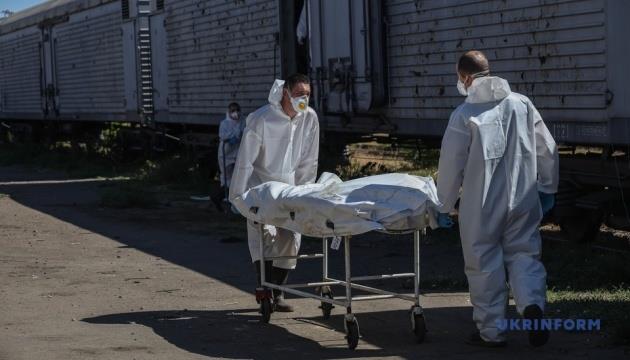Head Of Odesa Forensic Bureau Explains How Repatriated War Dead Identified
“Since early May 2024, we have received 10 repatriations. In total, over the past year and a half, Odesa has accepted 2,600 repatriated bodies. These are bodies returned as part of exchanges with Russia. The largest exchange during the full-scale war took place in the summer, when 6,000 bodies were delivered to Ukraine, of which Odesa received 1,700 - 1,600 in June and 100 others in August,” Papizh said.
According to her, the train cars transporting the bodies are connected to electricity and kept at minus 10 degrees Celsius. Each body is assigned a personal identification number before examinations begin. Obtaining a DNA profile from any biological material collected from a repatriated body takes, on average, 14 to 21 days, depending on the type of material - muscle tissue, bone, or cartilage - and its condition, including damage from external factors.
The Odesa bureau is the second in Ukraine to receive official permission from the Ministry of Internal Affairs to upload genetic data to the national electronic human genome registry.
Papizh added that if a body cannot be identified, it is buried as unknown after one year, in accordance with the law and with investigative approval. This usually occurs when no genetic comparison is possible, for instance, if the deceased had no relatives or their family is in temporarily occupied territories. When a body is identified, the On the Shield mission delivers it to relatives for burial.
“We don't know exactly what will be in a shipment or what we will have to work with. Sometimes there are three feet and three hands in a single package. All bodies arrive as unknowns. Personal belongings may provide additional investigative information, but we always conduct genetic testing,” she explained.
Papizh also noted that explosive objects - often spent shells, rusty grenades, or drone debris - are frequently found in body bags. Explosive ordnance technicians work alongside forensic specialists to safely remove these hazards.
Read also: Ukraine returns 1,000 more bodies of deceased as part of repatriation effortsForensic expert Viktor Mahrinchuk said that most of the recovered bodies belong to men aged 20–40 who died from blast and shrapnel injuries.
“Many bodies are missing limbs or heads, making it difficult to determine whether damage resulted from injury or torture. Most are in a waxy state, complicating the detection of wounds or scars. However, skull and body fractures remain, which allows us to determine the cause of death,” he explained.
Odesa is currently prepared to receive 300 bodies in the next exchange for identification and forensic examination.
As Ukrinform previously reported, 1,000 bodies have been returned to Ukraine through repatriation efforts.
Photo: Nina Liashonok / Ukrinform
Legal Disclaimer:
MENAFN provides the
information “as is” without warranty of any kind. We do not accept
any responsibility or liability for the accuracy, content, images,
videos, licenses, completeness, legality, or reliability of the information
contained in this article. If you have any complaints or copyright
issues related to this article, kindly contact the provider above.
Market Research

- Virtual Pay Group Secures Visa Principal Acquirer License
- UK Cosmetics And Personal Care Market To Reach USD 23.2 Billion By 2033
- BTCC Announces Participation In Token2049 Singapore 2025, Showcasing NBA Collaboration With Jaren Jackson Jr.
- 1Inch Unlocks Access To Tokenized Rwas Via Swap API
- Everstake Expands Institutional Solana Services With Shredstream, Swqos, And Validator-As-A-Service
- Primexbt Wins Global Forex Award For Best Multi-Asset Trading Platform



















Comments
No comment